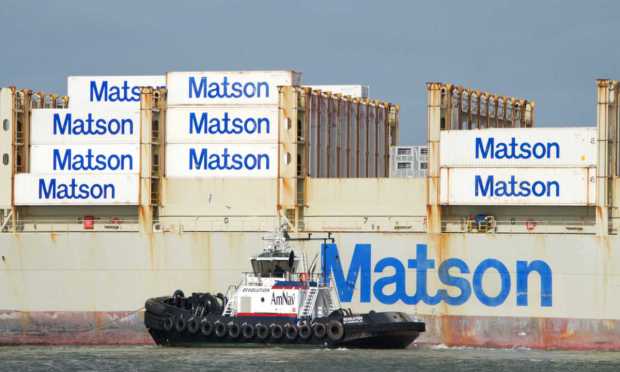Matson Sees Shipping Pick up Steam as Chinese Factories Restart

A pickup in manufacturing activity in China has increased the demand for ocean transportation, Matson reported during its quarterly earnings call.
The container shipping and logistics company, which is a leading United States carrier in the Pacific, reported that for the quarter ended June 30, its ocean transportation segment’s revenue increased 53.6% year over year. This growth was primarily driven by higher average freight rates and higher volume in China.
Container volume in the company’s China service during the quarter increased 11.7% year over year. Matson attributed this to elevated demand for eCommerce, garments and other goods. The company reported that some supply chain infrastructure issues are slowly subsiding, and China factory production continues to recover from the effects of the pandemic.
“Import commodities are making their way to the factories, and the logistics of moving freight from the factory floor to the port have become more fluid,” Matson Chairman and CEO Matthew J. Cox said during the call. “But, as we’ve seen in the last two years, COVID-19 waves have the potential to disrupt this part of the supply chain.”
At U.S. West Coast ports, congestion is improving, but there is still some terminal congestion. Key uncertainties here include ongoing rail clogging and the potential for a West Coast workforce slowdown as a labor contract expired July 1.
“In the last month or so, we’ve seen some customers opt to send U.S. cargo to the East Coast ports to manage risk during the peak season,” Cox said.
Mixed Results in Domestic Ocean Trade Lanes
In its domestic ocean trade lanes, Matson saw higher year-over-year container volume for the quarter in Alaska and softer volumes in Hawaii and Guam.
In Alaska, container volume for the quarter was up 12.2% year over year. The company attributed this to higher retail-related demand and further improvement in the unemployment rate.
“We expect the Alaska economy to benefit from the resumption of summer tourism and increased energy-related exploration and production activity as a result of elevated oil prices,” Cox said.
Container volume in the Hawaii service was down 1.5% for the quarter compared to the same period the previous year. The company attributed the decline primarily to lower retail-related demand.
“In Hawaii, domestic tourism was strong in the first half of the year, and we saw increasing international tourist arrivals, but total arrivals are still well below the pre-pandemic high,” Cox said.
In Guam, container volume decreased 7% year over year. Here, similarly, Matson attributed this to lower retail-related demand, an economy that continues to recover from the pandemic low and a slow return of tourism.
“Tourism has increased since the beginning of the year, but it’s still about 25% of the pre-pandemic level,” Cox said. “We expect further improvement in tourism arrivals from Asia to support the local economy, but the timing remains unclear.”
Negative Trends Affecting Consumer Spending
In each of those markets, Matson said, there are negative trends that create uncertainty in the trajectory of the economic recovery. These include weakening economic conditions that could negatively affect consumer spending and tourism, and higher inflation and higher interest rates that could negatively affect household discretionary income.
Looking ahead, Cox said Transpacific freight rates have likely peaked for now, as indicated by a gradual decline in recent weeks in the Transpacific freight indices from highs experienced earlier this year.
“At this time, we expect an orderly marketplace for the remainder of the year with our vessels continuing to operate at or near capacity and earning a significant rate premium to the market and well above pre-pandemic rate levels,” Cox said.
